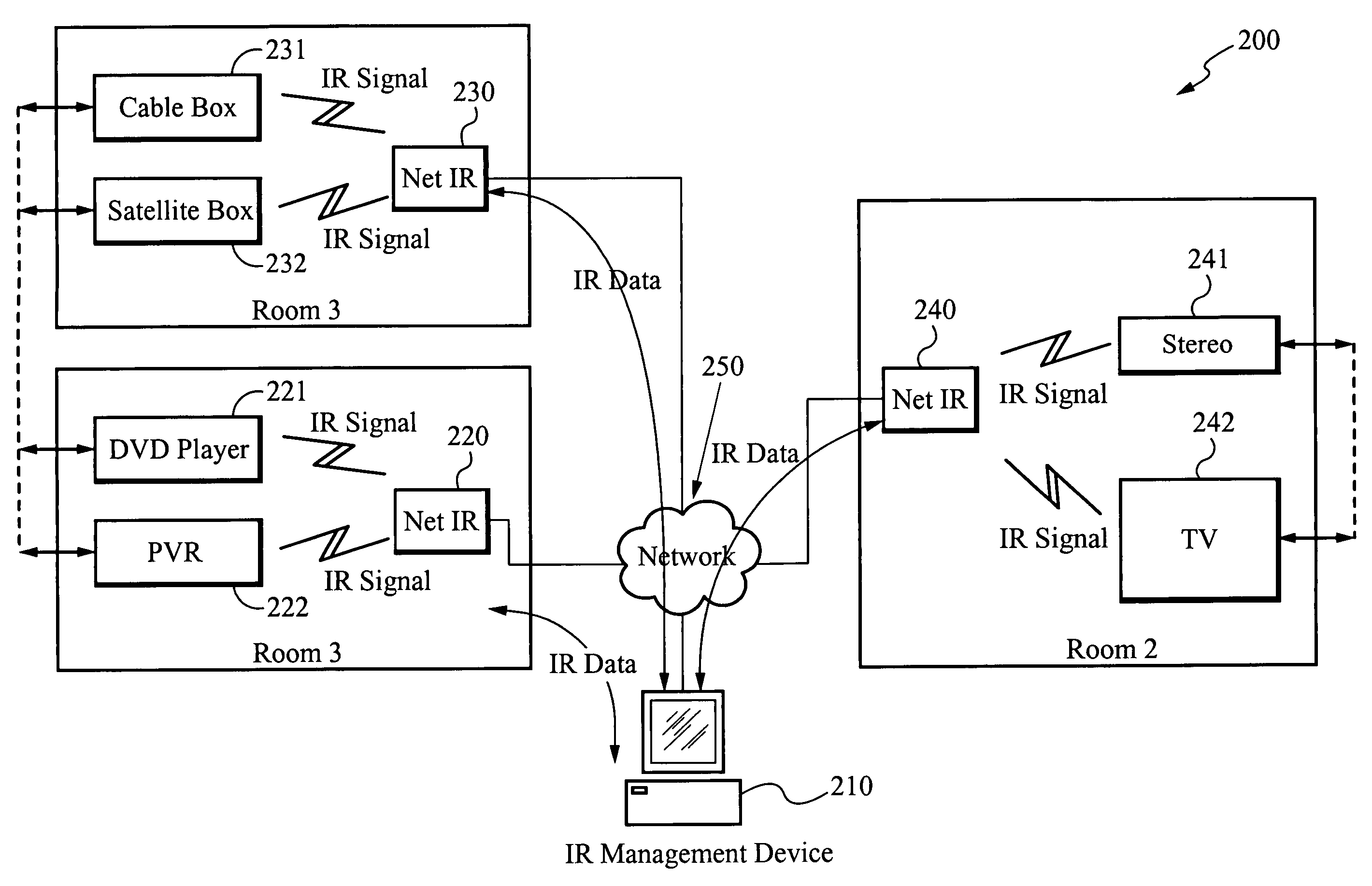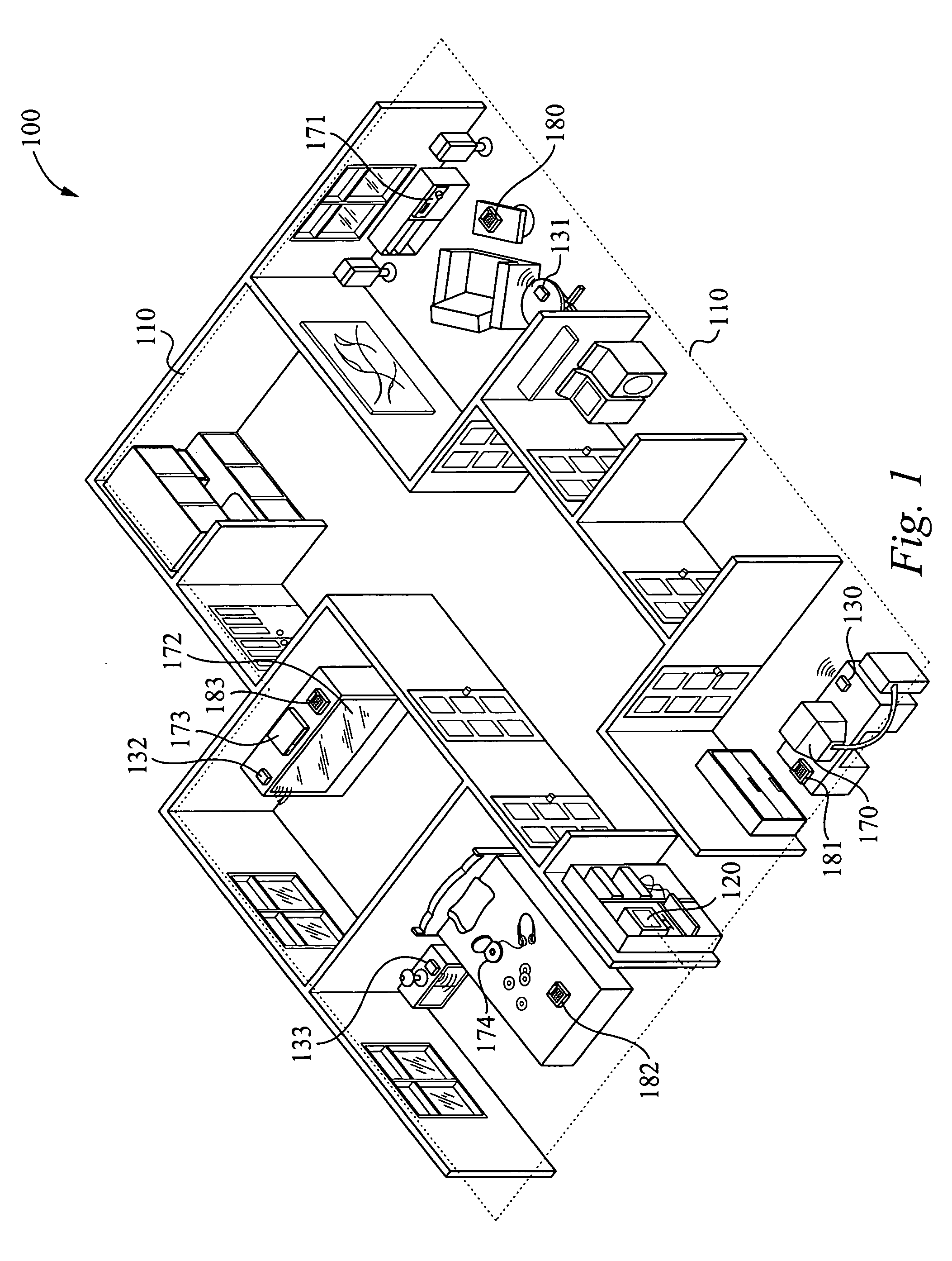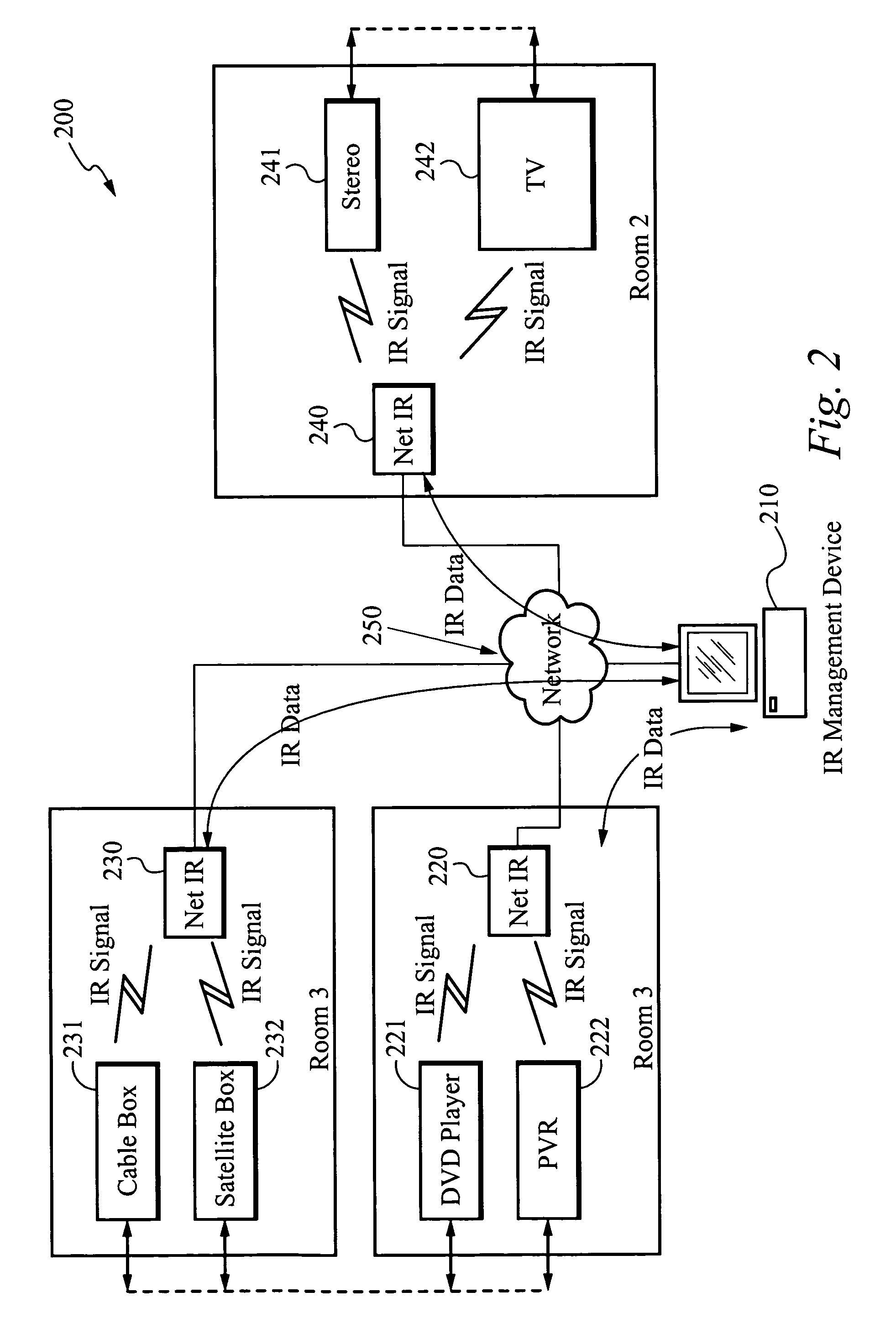Infrared signal distribution and management system and method
- Summary
- Abstract
- Description
- Claims
- Application Information
AI Technical Summary
Benefits of technology
Problems solved by technology
Method used
Image
Examples
Embodiment Construction
[0023]FIG. 1 illustrates a system for controlling a plurality of electronic devices locatable in at least two rooms within a building and coupled to a digital network according to the present invention. The system 100 includes a network 110, an IR management element or control unit 120, and a plurality of IR network devices or transceiver devices 130, 131, 132 and 133. The system 100 controls a plurality of electronic devices 170, 171, 172, 173 and 174 according to commands from a user with a wireless remote. FIG. 1 shows an example with four rooms included in the system 100. In this example, the electronic device 170 is personal computer. The electronic device 171 is a home stereo. The electronic devices 172 and 173 are a television and cable box receiver, respectively. The electronic device 174 is a CD player. A plurality of IR interface devices 180, 181, 182 and 183 are operated by a user to request an action by one of the electronic devices 170-174. The IR interface devices 180-...
PUM
 Login to View More
Login to View More Abstract
Description
Claims
Application Information
 Login to View More
Login to View More - R&D
- Intellectual Property
- Life Sciences
- Materials
- Tech Scout
- Unparalleled Data Quality
- Higher Quality Content
- 60% Fewer Hallucinations
Browse by: Latest US Patents, China's latest patents, Technical Efficacy Thesaurus, Application Domain, Technology Topic, Popular Technical Reports.
© 2025 PatSnap. All rights reserved.Legal|Privacy policy|Modern Slavery Act Transparency Statement|Sitemap|About US| Contact US: help@patsnap.com



